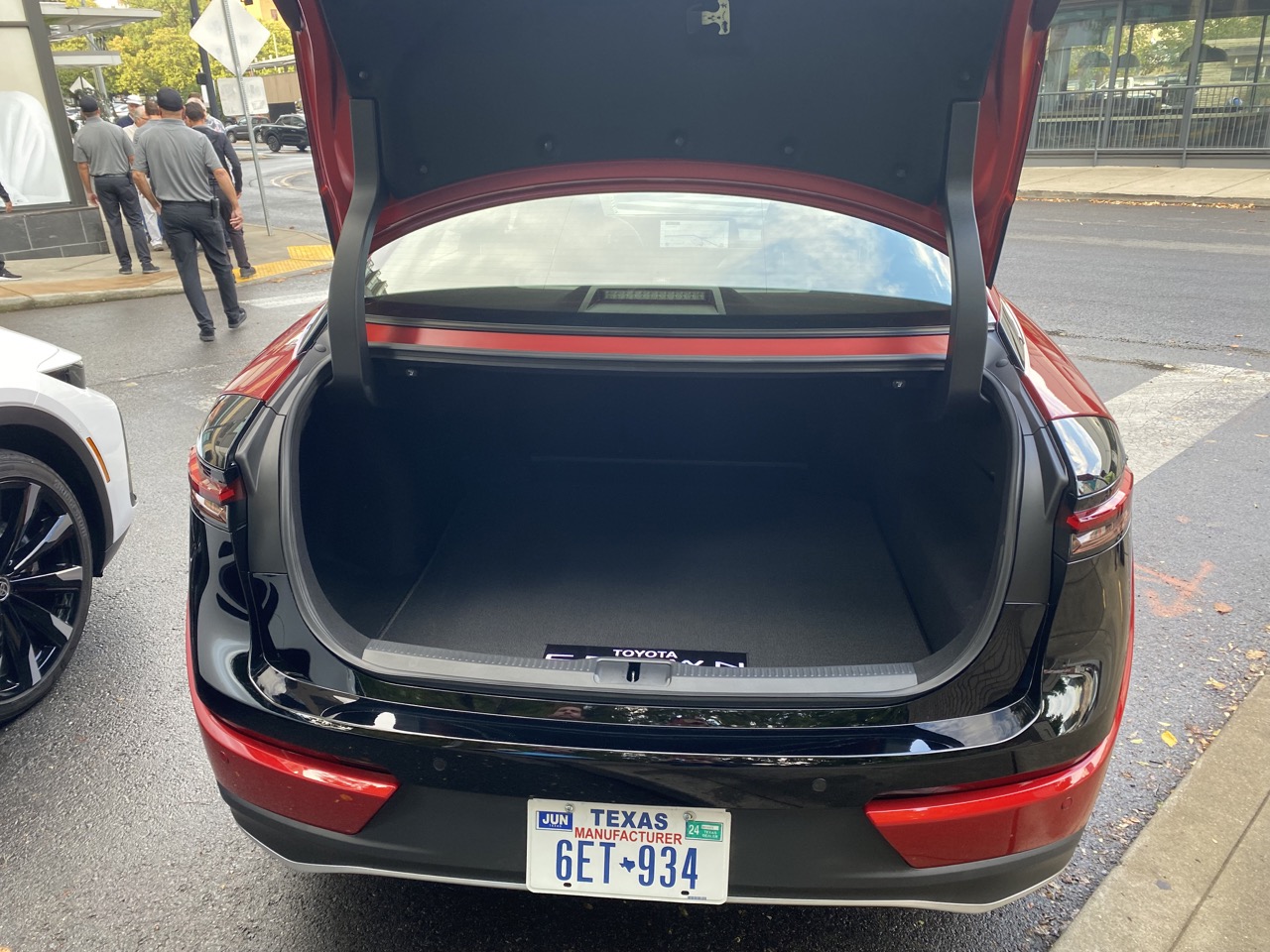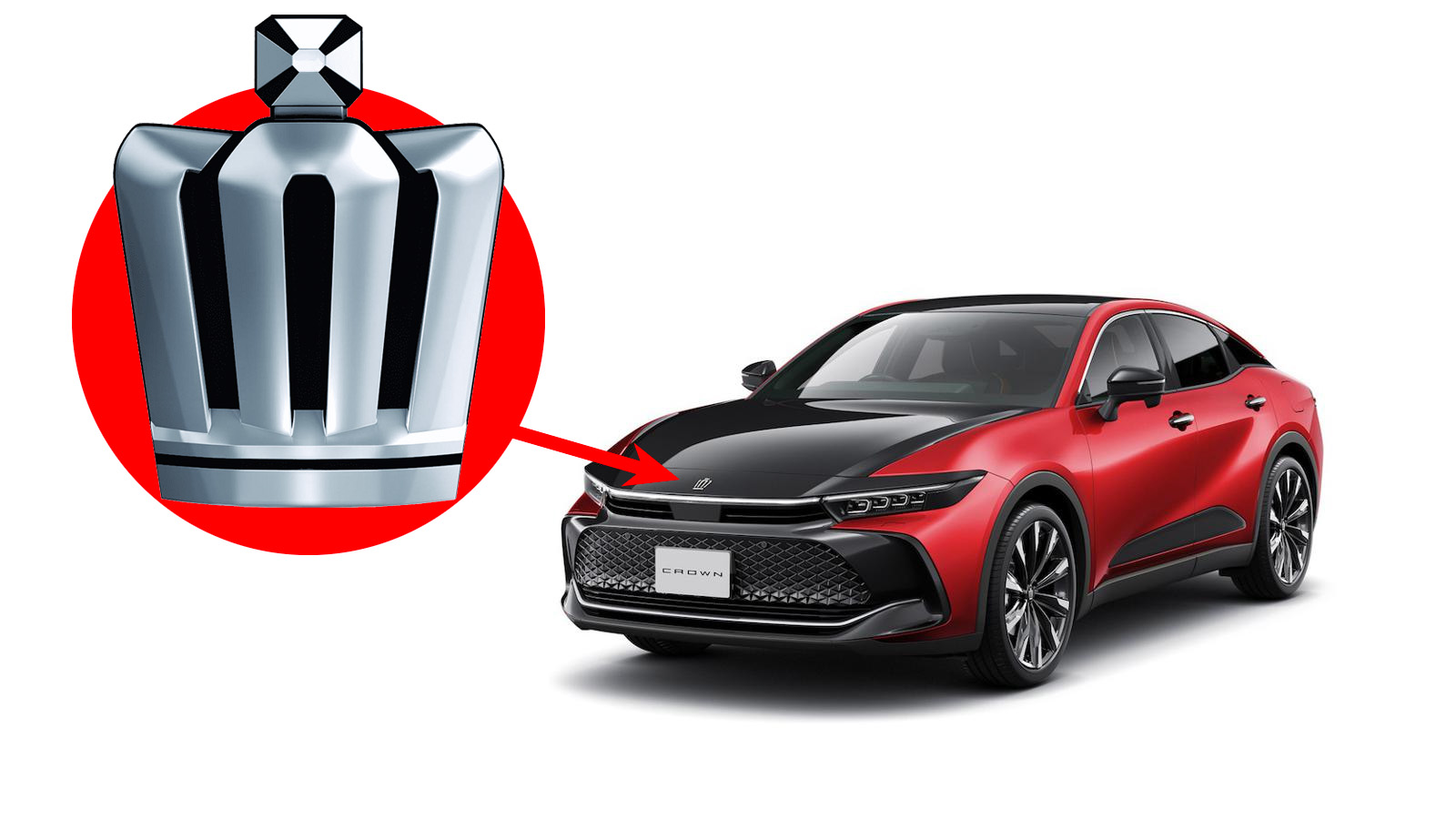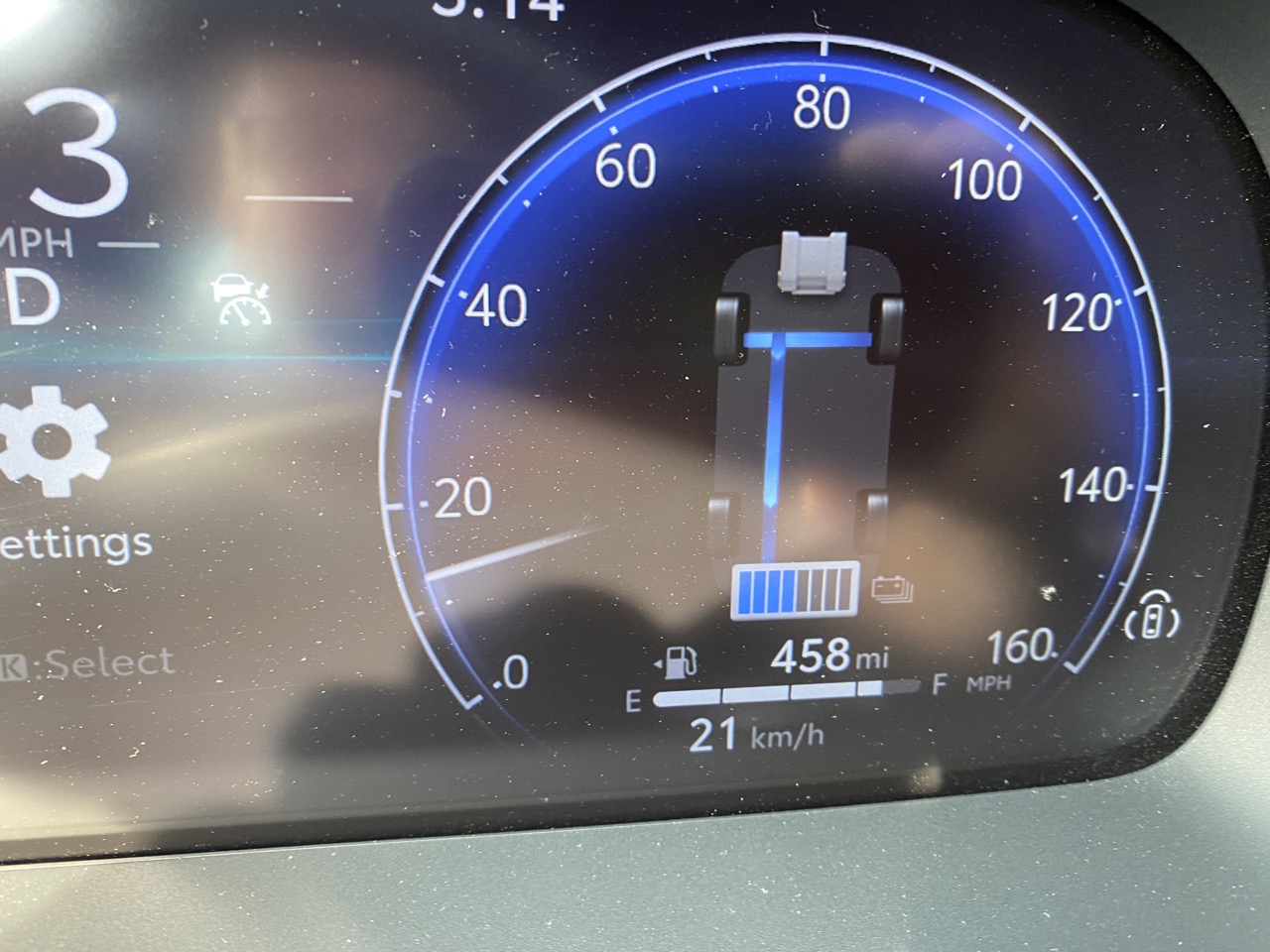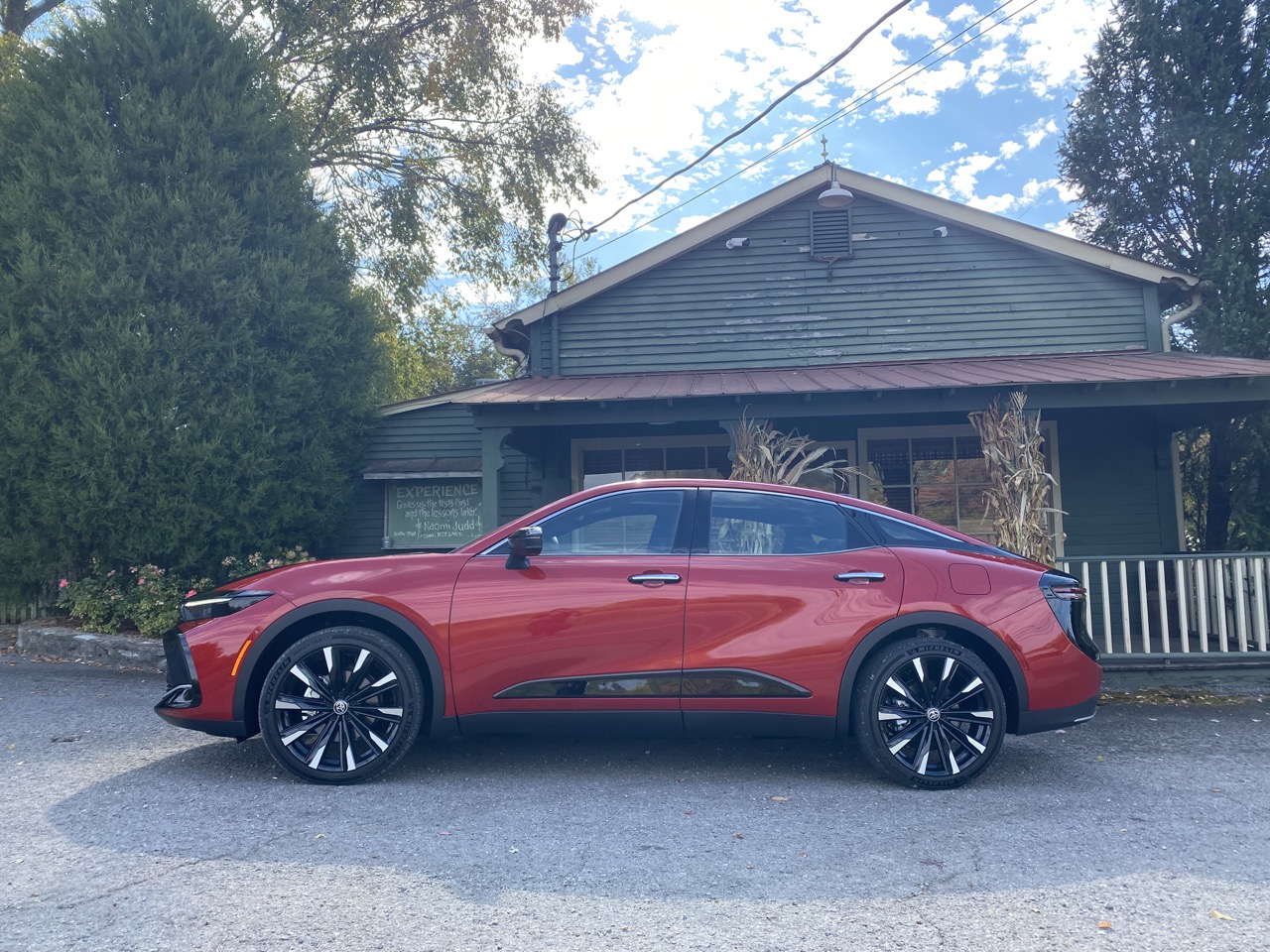What The Hell Is It?
To help us understand just what Toyota is doing here, I thought a visual may prove useful:
Here are the fundamentals: even though Toyota seemed to tell our own Mercedes Streeter back in July that the Crown is not a replacement for Toyota’s current top-of-line sedan, the Avalon, but they pretty much said it was during the press trip I was on, and, come on, that’s basically what’s happening. This will replace the Avalon as Toyota’s high-end sedan, riding that blurry line between Toyota and Lexus, which makes sense as this is the place the Crown occupies in Japan and other parts of the world that have traditionally had the Crown. The Crown hasn’t been sold in America since the 1970s, even though the first Toyota to come to the US was the Toyopet Crown, which was a bit of a disaster. But, the Crown persisted in other markets, where it became a Toyota flagship, resplendent and decadent. Moving down the chart, let’s address the most notable trait of the new Crown: it’s a crossover. That’s by no means interesting today – in fact, it’s basically anti-interesting to the point where if you threw that fact into a reactor with a copy of James Burke’s Connections you could probably power a small city for a month. But, it becomes interesting again when you realize that the Crown is a crossover sedan, a body type that there are really quite few examples of. The most famous may be the AMC Eagle 4×4 sedan, and currently the electric Polestar 2 has essentially the same formula: big tires, higher ride height, sedan body. The Crown is built on Toyota’s modular TNGA-K platform, though they noted that from the driver’s seat back it’s been re-worked, with a new multilink rear suspension designed to maintain, in Toyota’s words “sedan performance,” which objectively is nearly meaningless, but I think I know what they mean. They mean it should handle a bit better than a conventional, wagon-body-type crossover. The Crown has 5.8 inches of ground clearance, so you can free yourself from the tedium of steering around anything under six inches tall, like curbs or discarded apples or medium-sized stacks of magazines or even club sandwiches, set on plates with one of those little cellophane-topped toothpicks in it. The overall height is 60.6 inches, about four inches higher than a conventional sedan like Toyota’s Camry. It’s a tall sedan, with a trunk and everything.
Who is this for, exactly?
I thought Toyota’s list of what cars may be cross-shopped against the Crown was strange and interesting. The Kia Stinger was on that list, along with the Nissan Maxima and Volvo S60. None of these cars are really huge sellers, and Toyota was even hesitant to name these other options, preferring to believe the beautiful illusion that they’ve made something absolutely incomparable. Let them have that. They did say that their target buyers would be “young empty nesters,” a group that I imagine is composed of people in their mid 30s who set their children free in the woods because fuck it, too much work. I find this kind of a strange demographic, because the car feels far too roomy and big for a couple with no kids. This could easily be a family car, if desired. But, somehow we’ve all decided as a culture that almost everything needs four doors, so with that in mind, sure, young, sexy empty-nesters it is. Toyota isn’t blind to the fact that most of what’s currently being sold are SUVs and crossovers, but they did note that 20% of the 3.4 million cars sold in the US were sedans, which comes to 680,000 cars, which is plenty of cars to sell.
Toyota’s tagline for the Crown is “Says so much” which feels like it can be good or bad depending on how you say it and whether you’re rolling your eyes or not. “Oh, hey, did you hear Cleandra and Mellikon bought a new Toyota Crown now that they’ve sent their kids away to that underwater boarding school?” “Oh, really? That says so much.” See what I mean?
How’s It Look?
Like so many things in life, for better or worse, looks are important. They’re very important for the Crown, because, let’s be honest, pretty much anything roughly in this price range will do essentially the same job, about as well. It’s all about style and details, really, and, fortunately, the Crown has a notable set of both. The look is unusual, primarily because of the crossover-sedan format, which is still very uncommon. The big wheels/sedan body does give everything a look of substance and athleticism without the considerable bulk of most SUVs and crossovers. The profile is very much a fastback, but Toyota was adamant to note that there is no hatch, and it’s just a trunk, and I’ll admit I’m not really sure why this was treated as such a big deal, in a positive way, because a hatch would have made this a lot more flexible and useful. Incredibly, I think we’re still dealing with hatch-stigma, where the very concept of a hatchback on a non-wagon/crossover/SUV body is somehow associated with low-end cars, and all of the insecure status horseshit that gets lumped on that class of car. It’s stupid, but it’s a thing, and as a result, this is how the rear opens up to allow you to shove items into it:
Luckily, it’s a pretty generous trunk opening, and a good-sized trunk. I bet you could shove a lawnmower in there and let the handle hang out the back, if you had to. The other important thing to note about the exterior look of the Crown is how much work that two-tone paint is doing. I’m very pro two-tone, or, as Toyota calls it, bi-tone.
The bi-tone colors are only available on the Platinum trim (we’ll reveal more about that as you read) and they really do a lot to make the Crown stand out from the usual sea of boring cars. For example, here’s a very panda-like black-and-white two tone:
…and here’s the Crown just in monochrome white:
It’s still a bit of an unusual-looking car, but the bi-tone really changes things, and makes it genuinely noticeable. Let’s look at a monochrome red one now:
…and the two tone:
It feels different. A bit more menacing, a bit less ordinary. I’m not sure I think the Crown is actually pretty, but it is striking. It’s not an elegant look, but it does have presence. The wheel choice is especially important on the Crown, as it wears its prominent wheels showily. The wheels on the cars I tested were these glossy black 10-spoked things with silvery daggers on them, causing me to think of a lamprey mouth, but not in a negative way, if that somehow makes sense.
Facial Questions
I do have two complaints about the front end, one of which is an absolute mystery to me.The first issue has to do with the badging. In Japan, the Crown has always sported its own ideosyncratic badge, a blingy and fun stylized crown. The non-US-market cars continue to use the stylized crown badge:
This is, of course, objectively a better badge than the three oval Toyota logo that American market cars get. It’s more exciting, more confident, more fun. I asked several Toyota PR people, including Akihiro Sarada, the Chief Engineer, who did agree the Crown badge was pretty badass, though I don’t think he used those words. From what I could gather, Toyota felt (correctly) that most Americans were unfamiliar with the Crown badge, and as such decided (incorrectly) to replace it with the normal Toyota logo. Personally, I think the crown badge should at least be an option – and, I’m pretty sure it will be, from third party vendors. It just fits better with the slightly outlandish feel of the car. The second thing has to do with that central light bar between the headlights; in all markets other than America, it illuminates with a beautiful alabaster light! But in the US? It’s dark. Lifeless. And I have no idea why. Toyota reps I spoke with suggested it had something to do with American regulations, even though cars like the VW ID.4 and the freshly-refreshed Ford Escape manage to pull it off, somehow. So what the hell, Toyota? Both of these seem like very fixable problems.
Technical Stuff
Every 2023 Crown is a hybrid, using Toyota’s eAxle at the rear, and a combined combustion engine and electric motor up front, for an all-wheel drive setup, either on-demand or full-time, depending on which drivetrain is chosen.
There are two drivetrains available, the Hybrid and the Hybrid Max. The Hybrid uses an 88kW/118 horsepower, 149 lb-ft of torque motor in front, and a 40 kW/54 hp and 89 lb-ft torque motor in rear, combined with a naturally-aspirated 2.5-liter inline four making 184 hp amd 163 lb-ft of torque, for a combined drivetrain output of 236 hp and 163 lb-ft of torque. The Hybrid Max has a 61kW/81 horsepower, 215.4 lb-ft of torque motor in front, and a 58.6kW/79 hp and 124 lb-ft torque motor in rear, combined with a turbocharged 2.4-liter inline four, for a combined drivetrain output of 340 hp/332 lb-ft of torque. The Hybrid Max uses a direct-shift six-speed automatic gearbox, while the Hybrid has an electronically-controlled CVT that I have to say I wasn’t too fond of. These drivetrains will hurl the roughly 4,300-pound Crown from a stationary to 60 in 7.6 seconds for the Hybrid and 5.7 seconds for the Hybrid Max. The Max definitely feels quicker, and I think a lot of that has to do with the six-speed auto, which doesn’t have the annoying loud-revs/long lag/finally some speed quality of the CVT.
The battery used in Toyota’s hybrids is a bit unusual in this age of Lithium-based batteries, as it’s what is known as a “bi-polar nickel metal hydride battery.” The bi-polar designation may seem ironic for a NiMH battery, since in human biology you might use lithium to treat bi-polar conditions, but here, of course, the bi-polar means something very different, specifically a design that can reduce volume and internal battery resistance. The pack’s voltage is 230.4 volts, and has a capacity of 5 Ah. I tried to g3t a shot of the eAxle motor assembly on the rear axle, and sort of succeeded:
The eAxle will always get at least 20% of the power, at least for the Hybrid Max drivetrain, which is why it’s a full AWD system as opposed to the Hybrid setup, that can operate as a FWD-only car.
Oh, one minor technical question I never got an answer to: on the on-dash graphic that shows how power is being distributed, from either the ICE engine or electric motor, it only shows regen happening from the front axle to feed the rear battery; does this mean the rear motor is not used for regen, or was it just done this way for graphical clarity? If I get an answer to this important question, I’ll update.
The Inside Within
The Crown’s interior feels upscale and the materials all feel generally high quality, but it also feels quite, well, cluttered inside. It’s not exactly cramped, and the seats are plenty comfortable, but there’s just a lot of stuff in there, especially up front.
The rear is a bit more open, and the rear bench is very comfortable, even to lay across and have a nap on, which is always a plus. Here’s the rear bench on a non-Platinum-spec car:
I actually really liked the tweedy lower trim level seat material; I’m not certain if you can spec a bi-tone Platinum one with this seat fabric instead of the leather, but that would be the way I would go if I could. One annoyance about the rear seats is that I could not find an inside-the-car release to fold the rear seats down; they only seemed to be inside the trunk.
I suppose this isn’t the biggest deal in the world, but I found it annoying. You know what Toyota does do extraordinarily well? This:
Toyota has some of the beefiest, most effective floor mat anchors in the industry, perhaps because of those lawsuits back in the day. Whatever the motivation, you can be sure those floor mats aren’t going anywhere unless you want them to, and I suspect there must be some segment of the market for whom this is a big deal. Other details leave me puzzled, like Toyota’s glass roof design:
The Crown is a premium car, and as such it should absolutely have an option for a glass roof, because glass roofs are fantastic. What I don’t understand is why the Crown’s glass roof is split like this, 25% up front and then 75% behind, with what looks like a roll bar that connects the car’s B-pillars. I get why you may do this for torsional stiffness or rollover safety, but pretty much all automakers, including Toyota, have built cars that are stiff and safe and do not need this crossmember stuck there bisecting a glass roof. A Toyota rep I spoke with said it had to do with getting the body rigidity they wanted, and while this could easily be true, I have to question the logic of this decision. Are the young empty-nesters Toyota wants to sell Crowns to going to be whipping these things around their local track and appreciating that stiffness, or are they going to be driving to shopping centers and taking leisurely, comfortable road trips to look at the changing leaves through their large glass roof? I think I know the likely answer, and it doesn’t work better with that big bar there. Also, I don’t get this glovebox shelf that cuts the glovebox space up so much:
Maybe a really fat owner’s manual is supposed to sit in there?
Also unexpected, but not necessarily bad are the rear seat heated seat controls, which are on the door armrest. It’s not where you usually find this, but it’s not really a bad choice, and hey, heated rear seats are nice.
How Is It To Drive?
The two drivetrain options make a huge difference in the driving experience, and it’s not just about the increased power of the Hybrid Max setup. It’s the transmissions. The six-speed auto is so much more pleasant and engaging to drive than the CVT that I don’t even really feel like I could recommend the CVT, even though the CVT’s fuel economy is significantly better: 42 city/41 highway/41 combined for the XLE and Limited trim levels, while the Platinum level with the Hybrid Max only makes 29 city/32 highway/30 combined. Both are decent, but there’s an 11 mpg difference between the two combined ratings, and that’s a lot. A car like this that gets 41 combined mpg is fantastic, and I suppose you’d get used to the CVT; on my drives in the car, I never really did. The Hybrid Max can split wheel power from front (70:30) to rear-biased (20:80) depending on driving conditions, and while I didn’t get an opportunity to really push the car hard enough to feel this, I like knowing it’s possible. Overall, though, the Crown is an easy, comfortable car to drive, smooth and generally quiet, though under hard acceleration you can hear a distinctive Jetsons-like whine from the rear motor, which I actually kind of liked.
The Platinum trim/Hybrid Max has six driving modes, most of which are self explanatory, except perhaps for Sport and Sport S+. The difference is that the S+ mode stiffens the suspension to reduce body roll and changes the steering input, along with re-mapping the throttle response to be more, um, responsive, while Sport S just does the throttle changes, and leaves the suspension in the more comfortable mode.
The Hybrid drivetrain just has the three basic driving modes you’d expect, Sport, Normal, and Eco. These do exactly what you’d think, except for Eco, which releases e.coli bacteria into the air via the HVAC system. No, no, I’m kidding! Eco maximizes fuel economy and all that, just like everywhere else. I can’t believe you fell for the e.coli thing.
The Crown would make a fantastic road trip car, and an easy around-town, do whatever car, which is precisely what it should be. Is it particularly engaging to drive? Eehhh. I mean, the Hybrid Max is certainly quick, and the mass of the car is mostly low, so it holds the road well, and the suspension (MacPhersons up front with a stabilizer bar, multi-link at the rear with another stabilizer bar, both hollow, but the Hybrid Max has bars a millimeter or two bigger in diameter and a solid bar at the rear) feels pretty good. Of course, it’s not like I got to autocross it or anything, but let’s be real, that’s not what this car is for.
Electronic Whatevers
The Crown has the usual assortment of electronic gadgets that you’d expect in a car of this class, with five USB ports (four USB-C, one USB-A) and an interesting, pocket-like design for the wireless charging pad, as you can see above.
The Crown does have wireless CarPlay and Android Auto, as it should, but for whatever reason I had to use a cable, like some filthy animal, when I was testing it. Perhaps it’s because these were preproduction cars? Anyway, Toyota assures me wireless CarPlay works, so that’s good.
That center screen is big, about 12 inches, and Toyota’s interface is, well, fine, certainly no worse than any other mainstream touchscreen car UX. The 360° cameras looked good on the big screen and were, as always, handy to have. The voice commands worked well for things like navigation, which I know because I got lost a few times and was able to just yell at the car to find my way back. Oh, I do like how the Platinum trim has a washer for the rear camera:
That’s not something you see that often on any car. A full suite of driver-assist, Level 2-type assisted driving tools are available, including dynamic cruise and Steering Assist and Lane Tracing Assist and these systems were able to follow road curves and, perhaps problematically, require diminished attention from the driver. The car is paying attention, though: atop the steering column sits something that looks like an old column-shift PRNDL indicator:
There are infrared driver monitoring cameras in there, making sure you’re at least facing the windshield while the car is under partial automated control.
How Much Is It?
The Crown starts at $39,950 for the XLE, $45,550 for Limited, and both of those come with the basic Hybrid/CVT drivetrain. If you want the bi-tone paint and the Hybrid Plus with the six-speed auto, you’ll have to plonk down $52,350 for the Platinum. By modern car standards, these prices go from average to a bit above average, so I generally think the pricing is pretty fair. You are getting a lot for your money, and, you know, it’s a Toyota, so it’s not likely to be crap.
So What’s The Takeaway?
The biggest draw of the Crown, I think, is that it doesn’t look or feel like everything else on the road, especially with that two-tone paint, and I think that’s always a good thing. It’s plenty comfortable, has all the modern car crap your partner is probably going to demand, and gives you sedan-like handling and looks while still being able to comfortably drive over stacks of things that are approaching six inches high. You also get the higher driving position people like, without all that pesky enclosed interior cargo room of a wagon-like SUV or crossover. It’s quiet and quick and easy and considering what you get, the price isn’t bad. It’s better than the soporific Avalon it replaces, and I think the general carscape will be better for having some Crowns whizzing around in it. Just treat yourself and get an aftermarket crown badge for your hood. Maybe one for the trunk. You’re worth it. Yes, Toyota manuals are that fat. It won’t even fit in the shelf if it isn’t folded properly Otherwise, these things do seem like kind of a neat take on the H-point optimized vehicle. Did they give any indication of when these might be available for purchase? I hate this so, so much. Commit to a crossover with a hatch or a sedan with a trunk. Don’t take the worst of both worlds and combine them. I get that tall cars are just for headroom and higher seating position, but if they had just a smidge more clearance they could be way more functional. See: Subaru. Overall, I’d be interested if it had a hatch. But it doesn’t. I’d be interested if it was a PHEV, but its not (yet anyway). For a $50k Toyota, I’m not sure why I’m not buying a ES300h or NX300h. Or a RAV4 Prime (if they are ever obtainable). I think they missed the boat with the twin cockpit front seats. I’m sure they’ll pick up some sales from the folks who used to buy Corvettes, but at the expense of alienating everyone who prefers some elbow room. They’d have been better off with a front bench option. Final thought- I hate those giant wheels. When people talk about the price of lithium and how that will affect BEVs, they forget that there are other options out there. The only reasons why Lithium-based batteries have become dominant is due to: 1. being the best combo of cost, capacity, performance and weight compared to the alternatives (NiMH) 2. NiMH was hamper for years by Chevron actively preventing the use of NiMH batteries in BEVs… known as “patent encumbrance”. https://en.wikipedia.org/wiki/Patent_encumbrance_of_large_automotive_NiMH_batteries However on point #2, the patents that have been holding up development have now expired. So in the future, we just might see NiMH make a comeback for commodity price reasons. And it should be noted that in the early to mid 1990s, NiMH and Lithium batteries where pretty close in terms of competitiveness overall. I recall that Lithium had a bit of a capacity advantage, but NiMH had advantages in terms of robustness, heat and cost. But once Chevron got their dirty hands on the NiMH patents (that GM stupidly sold them for a song), there were lawsuits between Chevron and Toyota as Chevron actively tried to block the use of NiMH in cars… even hybrids. That in turn caused all the R&D money to go into Lithium, while R&D for NiMH basically dried up. I’m not sure yet, but so far I’m wishing they’d just made a new version of the Avalon instead. Or just updated the styling of the Avalon a little bit again.









































